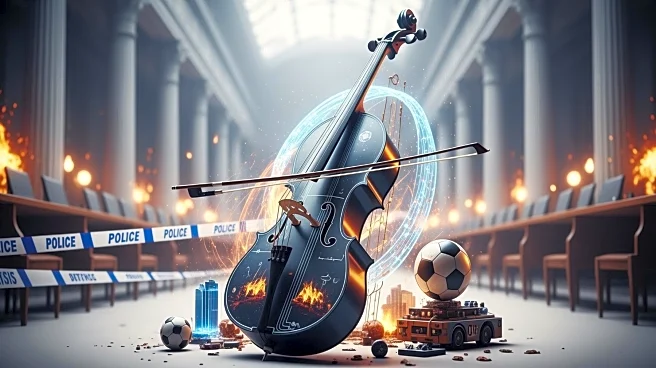What's Happening?
Experimental cellist Clarice Jensen has released a new album titled 'In holiday clothing, out of the great darkness,' which draws inspiration from Johann Sebastian Bach's solo Cello Suites. Known for her
innovative use of electronics to transform the sound of her cello, Jensen's latest work emphasizes the acoustic qualities of her instrument while incorporating electronic elements like looping pedals and octave shifters. The album features pieces that echo Bach's compositions, such as the opening track that mirrors the arpeggiated lines of Bach's Cello Suite No. 1. Jensen's work is described as creating a new musical language inspired by Bach's classic literature, blending traditional cello sounds with modern electronic techniques.
Why It's Important?
Jensen's album represents a significant intersection of classical music and modern technology, showcasing how traditional compositions can be reimagined in contemporary contexts. This fusion of acoustic and electronic elements not only broadens the appeal of classical music but also highlights the versatility of the cello as an instrument. By drawing on Bach's work, Jensen connects past musical traditions with present-day innovations, potentially attracting a diverse audience that includes both classical music enthusiasts and fans of experimental sounds. Her collaboration with bands like My Chemical Romance further illustrates the crossover potential of her music, bringing ambient and classical influences to new audiences.
What's Next?
Jensen's exploration of Bach's influence through electronic means may inspire other musicians to experiment with classical compositions in modern contexts. As she continues to perform and tour, her work could lead to increased interest in the integration of classical music with electronic and ambient genres. This trend might encourage more collaborations between classical musicians and artists from other musical backgrounds, fostering a richer and more diverse musical landscape.
Beyond the Headlines
Jensen's approach raises questions about the preservation and evolution of classical music in the digital age. By blending traditional and modern elements, she challenges the boundaries of genre and invites listeners to reconsider the role of classical music in contemporary culture. This could lead to broader discussions about the accessibility and relevance of classical music today, as well as its potential to adapt and thrive in a rapidly changing musical environment.











